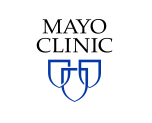Brain and Abdominal Aneurysm Study
| Status: | Active, not recruiting |
|---|---|
| Conditions: | Cardiology |
| Therapuetic Areas: | Cardiology / Vascular Diseases |
| Healthy: | No |
| Age Range: | 18 - Any |
| Updated: | 2/3/2019 |
| Start Date: | August 2011 |
| End Date: | December 2024 |
Brain and Abdominal Aneurysm Study (BAAS)
Aneurysmal subarachnoid hemorrhage (aSAH) is the most deadly kind of stroke. Each year,
40,000 Americans have SAH. Case-fatality approaches 60% and more than half of those who die
do so before reaching the hospital. Most commonly, SAH results from rupture of an
intracranial aneurysm. Screening high-risk individuals could identify those at greatest risk
and decrease the devastating effect of SAH. Aortic Aneurysm also constitutes a major public
health problem with high lethality. Current estimates are that ruptured aortic aneurysm kills
13,000 Americans each year. Screening efforts have effectively lowered mortality from aortic
aneurysm rupture but a high proportion of those who die did not have a diagnosis of aortic
aneurysm prior to rupture.
The relationship between intracranial and aortic aneurysm has long been recognized, but
poorly quantified. Recent genome-wide association studies (GWAS) provide a molecular
biological evidence for a shared pathophysiology. The chromosome 9p21 locus confers increased
risk for both intracranial aneurysms and aortic aneurysms. These GWAS data, along with
linkage data for other susceptibility loci, indicate that individuals and families harboring
one type of aneurysm may be at especially increased risk of the other.
The rationale for this project is that opportunistic screening for abdominal aortic aneurysms
(AAA) may be warranted in patients who present with aneurysmal subarachnoid hemorrhage. This
study is meant to see if the yield of screening in this population is too low to justify its
routine use. The investigators plan to systematically screen for AAA in all cases of aSAH
presenting to MCH for treatment. If no individual out of 81 consecutively screened cases of
aSAH has evidence of AAA, then the investigators can have strong confidence that there is a
less than 5% chance of finding an AAA in the patient population.
40,000 Americans have SAH. Case-fatality approaches 60% and more than half of those who die
do so before reaching the hospital. Most commonly, SAH results from rupture of an
intracranial aneurysm. Screening high-risk individuals could identify those at greatest risk
and decrease the devastating effect of SAH. Aortic Aneurysm also constitutes a major public
health problem with high lethality. Current estimates are that ruptured aortic aneurysm kills
13,000 Americans each year. Screening efforts have effectively lowered mortality from aortic
aneurysm rupture but a high proportion of those who die did not have a diagnosis of aortic
aneurysm prior to rupture.
The relationship between intracranial and aortic aneurysm has long been recognized, but
poorly quantified. Recent genome-wide association studies (GWAS) provide a molecular
biological evidence for a shared pathophysiology. The chromosome 9p21 locus confers increased
risk for both intracranial aneurysms and aortic aneurysms. These GWAS data, along with
linkage data for other susceptibility loci, indicate that individuals and families harboring
one type of aneurysm may be at especially increased risk of the other.
The rationale for this project is that opportunistic screening for abdominal aortic aneurysms
(AAA) may be warranted in patients who present with aneurysmal subarachnoid hemorrhage. This
study is meant to see if the yield of screening in this population is too low to justify its
routine use. The investigators plan to systematically screen for AAA in all cases of aSAH
presenting to MCH for treatment. If no individual out of 81 consecutively screened cases of
aSAH has evidence of AAA, then the investigators can have strong confidence that there is a
less than 5% chance of finding an AAA in the patient population.
1. Men and women age ≥ 18 years.
2. Diagnosis of intracranial aneurysm secured by magnetic resonance angiography (MRA),
computed tomographic angiography (CTA), or catheter-based cerebral angiography.
3. Diagnosis of subarachnoid hemorrhage diagnosed by head CT, brain MRI or lumbar
puncture.
4. Provides written informed consent.
5. No know diagnosis of aortic aneurysm
6. No history of prior screening for aortic aneurysm
7. No condition like recent abdominal surgical scar that would preclude abdominal
ultrasonography
8. No therapy like abdominal hypothermia pads that would preclude abdominal
ultrasonography
We found this trial at
1
site
Mayo Clinic Florida Thousands of people come to Mayo Clinic in Jacksonville, Fla., annually for...
Click here to add this to my saved trials
